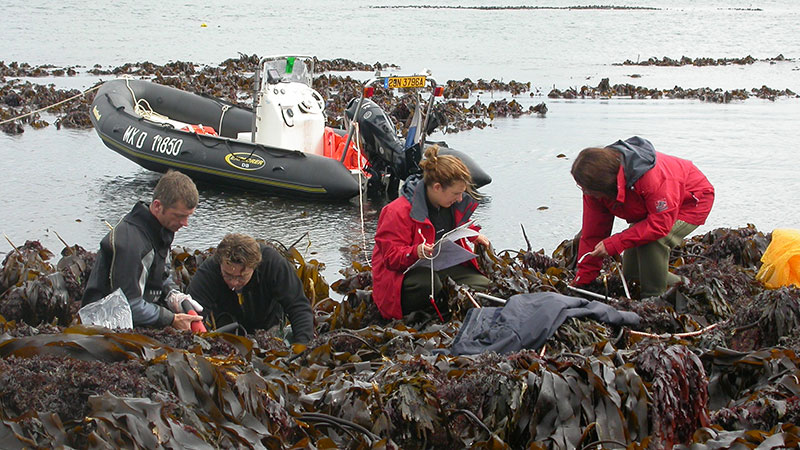Published:

The genetic imprints of kelp found on the shores of Orkney, Iceland, Ireland, France, the USA and Canada are helping scientists solve the mystery of how marine plant life survives extreme changes in climate.
Scientists from Heriot-Watt's International Centre for Island Technology (ICIT) in Orkney, the University of the Algarve in Portugal and Station Biologique de Roscoff in France have analysed the genetic composition of Laminaria digitata, commonly known as oarweed, from 14 populations distributed across the northern Atlantic Ocean.
The scientists now know how closely related the oarweed populations are to one another, and how they have moved around the Atlantic since the last ice age.
They found three distinct genetic clusters: one along the eastern seaboard of Canada and the USA; one in central and northern Europe and one very compact population around Brittany.
The genetic data indicates that the populations off Scotland and Ireland, and around Brittany, survived in those spots since the last ice age around 16,000 years ago, or what Dr Andrew Want, a marine ecologist at the ICIT, describes as “refugee populations that managed to hang on and survive amid dramatic changes as ice sheets retreated.”
Dr Andrew Want said: “Oarweed in Scotland and Ireland is more closely related to populations in the high Arctic than to the Brittany cluster.
“As the ice sheets retreated from northern European shorelines at the end of the most recent ice age, oarweed distribution followed and recolonised the higher latitudes of the Atlantic.
“Kelp plays a critical role in the Atlantic, so it is important to understand what affects its distribution and survival over time and how sensitive it is to change.
Dr João Neiva from the University of Algarve’s Centre of Marine Sciences (CCMAR) said: “Our study shows how marine organisms adjust to shifting climates by migrating polewards and even across the Atlantic when conditions are favourable.
“These migrations provide a mechanism by which marine life buffers the effects of global climatic shifts, and how they can compensate for predictable contractions at warmer limits as the modern climatic crisis unfolds.
“While the species may not be threatened at global scales, range contractions can have very negative impacts if vanishing ranges are composed of unique and diverse populations.
“This is certainly the case off the coast of Brittany.”
Dr Andrew Want continued: “Today, the Brittany population is once again close to the other populations, but has managed to remain distinct.
“Worryingly, this unique Brittainy gene pool is projected to disappear under greenhouse gas emission scenarios. This provides further evidence of the loss of biodiversity expected with rapidly changing marine temperatures”
The study was published in the European Journal of Phycology.
Understanding how kelp have responded to drastic climatic changes in the past allows scientists to better predict how they will respond to rising ocean temperatures.